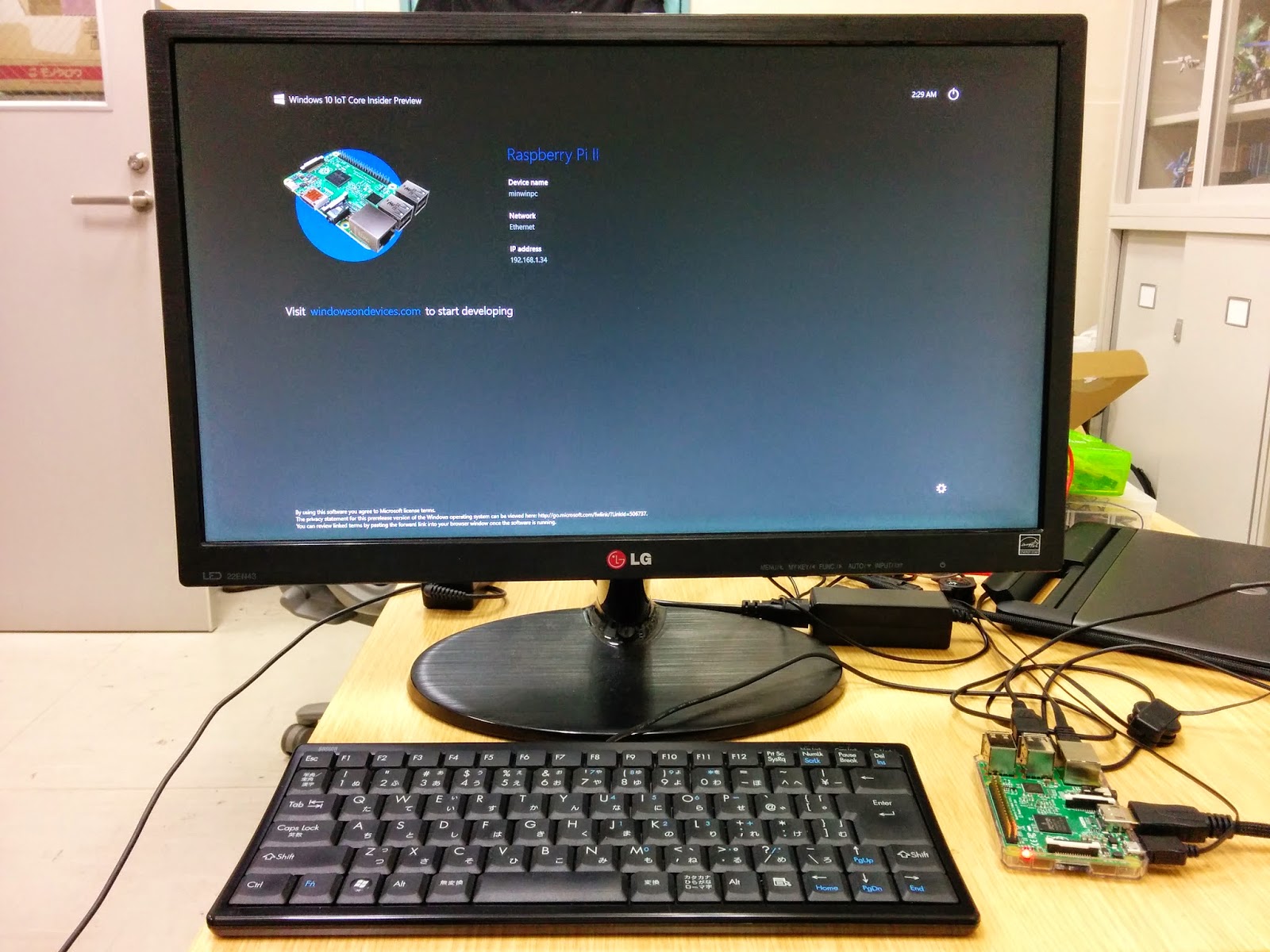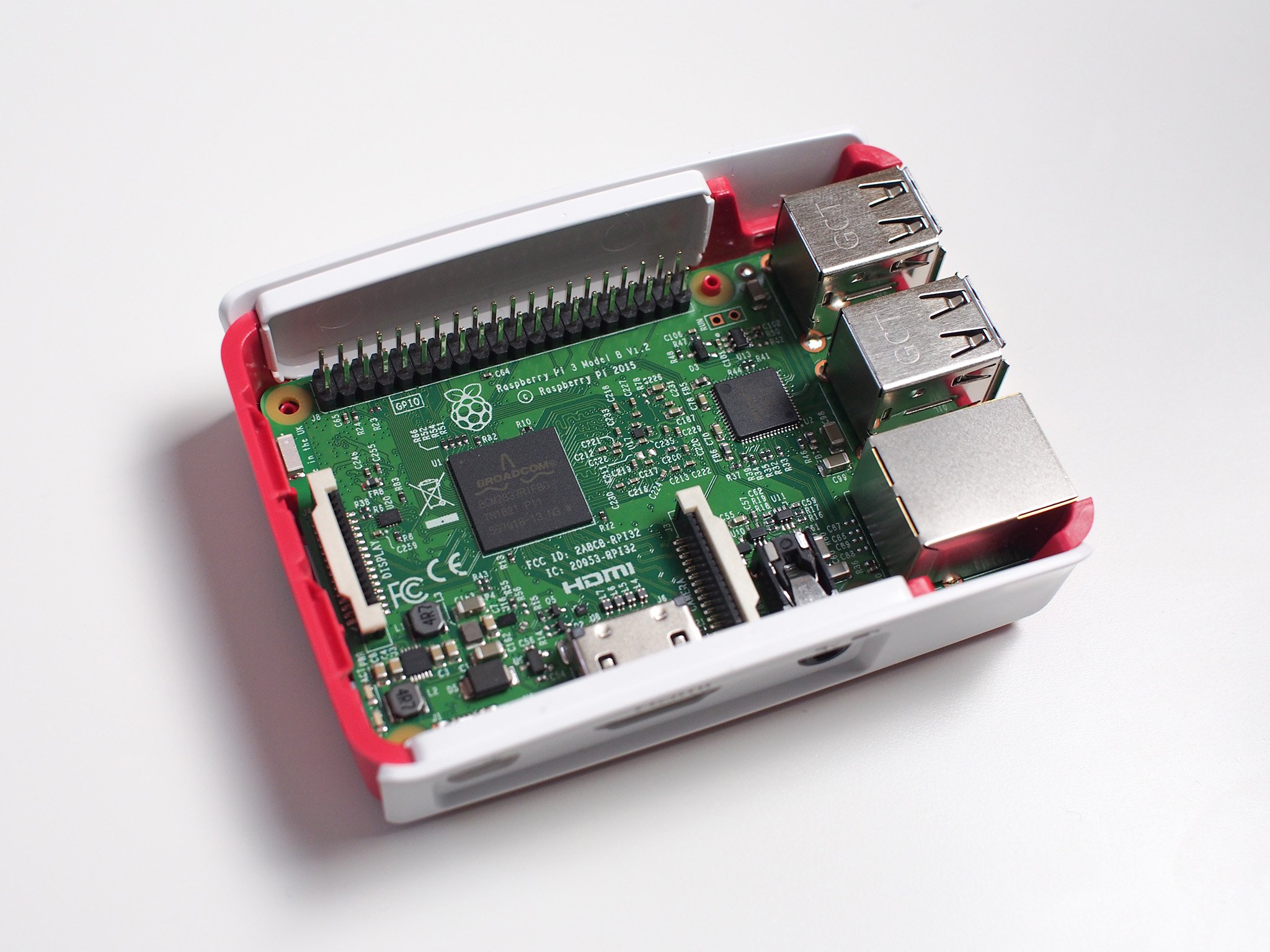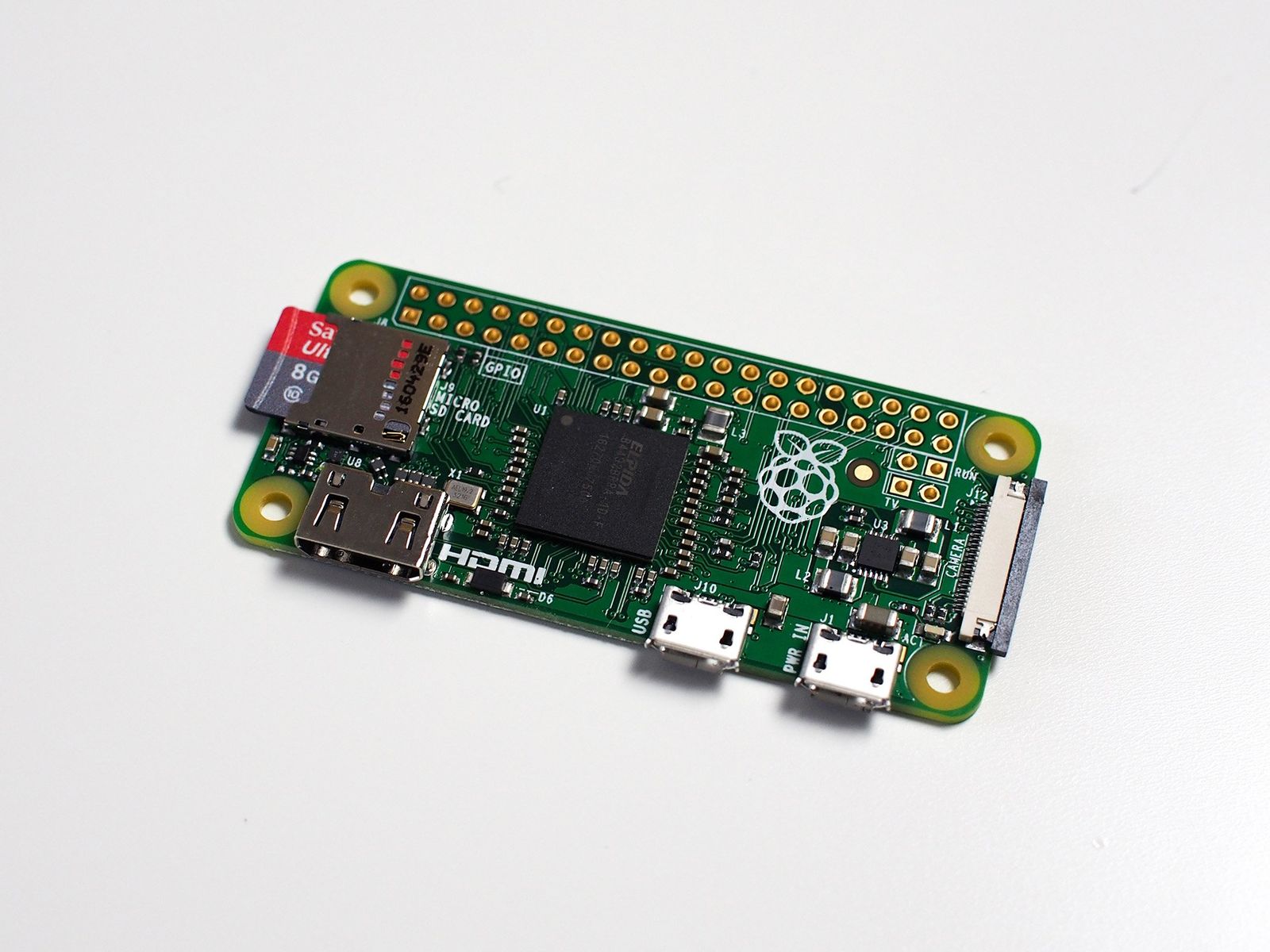Are you looking to connect your Raspberry Pi with your Windows computer, perhaps from a different room or even a different building? Many people want to manage their small computers without needing to plug in a screen and keyboard every time, and that's totally understandable. This guide helps you do just that, so it's almost like having your Pi right next to you.
We will look at how to get your Raspberry Pi to communicate with your Windows machine, using a method called SSH. This way, you can send commands and manage things from afar, which is pretty handy. You can actually do quite a lot with this kind of setup, you know.
The best part is that we will focus on tools you can download for free on Windows, making this whole process very accessible. This article will walk you through the steps, ensuring you have all the information you need to set up SSH on your Raspberry Pi and download what you need, basically.
- Charlie Rogers Ciaffa
- Alex Wagner Illness
- Who Is Steve Witkoff
- Mckinley Richardson Leaked Videos
- 145 Muhlenbrink Rd
Table of Contents
- What is SSH RemoteIoT and Why Does it Matter for Your Raspberry Pi?
- Gathering Your Free Tools for Windows
- Preparing Your Raspberry Pi for Remote Access
- Connecting Your Windows Computer to Your Raspberry Pi via SSH
- Exploring RemoteIoT Features and Beyond
- Common Questions and Simple Fixes
- Frequently Asked Questions (FAQs)
What is SSH RemoteIoT and Why Does it Matter for Your Raspberry Pi?
When we talk about "RemoteIoT" for your Raspberry Pi, we're really talking about controlling your small computer from a distance. This means you don't need to be right next to it to make it do things, which is pretty convenient, so to speak. It's about making your devices smart and reachable, even when you are far away.
The "IoT" part stands for "Internet of Things," which is a big idea about everyday objects connecting to the internet. Your Raspberry Pi, with its ability to connect to various sensors and act as a tiny computer, fits right into this concept. So, managing it remotely is a big piece of the puzzle, really.
Using SSH for this remote control makes a lot of sense because it offers a secure way to connect. It helps keep your data safe as it travels between your Windows computer and your Raspberry Pi. This guide will show you how a free, fully working remote IoT platform for SSH connections to Raspberry Pi devices on Windows is truly possible, and the answer, surprisingly, is a clear yes.
Getting to Know RemoteIoT
RemoteIoT, as a concept, simplifies how you look after your Raspberry Pi devices when they are not right in front of you. It's about having a system that lets you send commands, get information, and generally keep an eye on your Pi from your Windows machine. This platform aims to make that management smooth and easy, you know.
Think of it as a central spot where you can talk to all your connected Raspberry Pis. Instead of going to each one individually, you can use your Windows computer to reach out. This is a very helpful way to work with many devices at once, or even just one that is in a hard-to-reach place.
This approach means you can keep your projects running, update software, or check on sensor readings without needing to physically interact with the Pi. It makes working with your tiny computers much more flexible, which is a good thing, basically.
Why SSH is Your Best Friend for Remote Pi Access
SSH stands for Secure Shell, and it's a way to connect to another computer over an unsecured network in a very safe manner. For your Raspberry Pi, this means you can send commands and get responses as if you were typing directly on the Pi itself, but all the communication is scrambled and protected. This is a pretty big deal for security, too.
When you use SSH, your login details, like your username and password, are kept private. This prevents others from easily seeing what you are doing or trying to take over your device. It creates a private tunnel for your commands and data, so it's a very good choice for remote control, actually.
This secure connection is what makes RemoteIoT truly useful and trustworthy. Without SSH, sending commands over the internet could be risky. But with it, you can feel much more comfortable managing your Raspberry Pi from your Windows computer, knowing your connection is sound, you see.
Gathering Your Free Tools for Windows
To get your Raspberry Pi talking to your Windows computer, you will need a few free tools. The good news is that these are widely available and simple to find. We'll look at what you need to download and how to get started with them, so it's not too hard.
These tools are like your bridge between the two devices. They let your Windows machine understand and speak the language of SSH, which your Raspberry Pi uses for remote access. Having the right tools makes the whole process much smoother, which is what we want, right?
The best part about these tools is that they don't cost anything. This means you can set up your remote management system without spending any money on software, which is a great benefit for hobbyists and anyone on a budget, in some respects.
Finding a Reliable SSH Client (Like PuTTY)
A key piece of software you will need on your Windows computer is an SSH client. This program helps your Windows machine make that secure connection to your Raspberry Pi. One of the most popular and trusted free options is called PuTTY, you know.
PuTTY has been around for a long time and is very well-regarded for its simplicity and effectiveness. You can find it by doing a quick search online for "PuTTY download." Make sure you get it from the official source to keep things safe. It's usually a small file that installs quickly, so that's nice.
Once you have PuTTY, you can use it to open a command line window that connects directly to your Raspberry Pi. This window acts just like the terminal on your Pi, letting you type commands and see the results. It's a very straightforward way to get started, basically.
Other Handy Free Utilities You Might Need
While PuTTY is often enough for basic SSH connections, there are a couple of other free tools that can make your life easier. For instance, if you plan to move files between your Windows computer and your Raspberry Pi, a program like WinSCP is incredibly useful. It works with SSH to transfer files securely, which is a good thing.
WinSCP gives you a graphical interface, making file transfers feel like dragging and dropping, much like you would on your own computer. This is often easier than using command-line tools for file management. It's another free download that can save you a lot of time, too.
Sometimes, you might also want to use OpenSSH directly from Windows PowerShell or Command Prompt. Newer versions of Windows often have OpenSSH built-in, which means you might not even need to download a separate client like PuTTY for basic connections. You can check if you have it by typing `ssh` into PowerShell, and if it shows options, you're all set, you see.
Preparing Your Raspberry Pi for Remote Access
Before you can connect to your Raspberry Pi from your Windows computer, you need to get the Pi ready. This involves a couple of important steps to make sure it's running the right software and that it's open to SSH connections. It's pretty simple to do, really.
Getting your Pi prepared is a one-time setup for the most part. Once these steps are done, your Raspberry Pi will be ready to accept remote commands whenever it's powered on and connected to your network. This makes future management much easier, in a way.
So, we'll walk through getting your Pi's operating system in order and then turning on the SSH feature. These are foundational steps that make all the remote control possible, so it's worth doing them carefully, actually.
Setting Up Your Pi's Operating System
First things first, your Raspberry Pi needs an operating system. The most common choice is Raspberry Pi OS, which is free and made specifically for these devices. You can download it from the official Raspberry Pi website and then use a tool like Raspberry Pi Imager to put it onto a microSD card. This is a very standard first step, you know.
When you set up the operating system, you will also create a username and password for your Pi. Remember these, as you will need them to log in remotely using SSH. It's important to choose a strong password to keep your device secure, too.
Make sure your Raspberry Pi is connected to your network, either through an Ethernet cable or Wi-Fi. It needs to be on the same network as your Windows computer for the initial setup to work smoothly. This network connection is how your Windows machine will find your Pi, basically.
Enabling SSH on Your Raspberry Pi
By default, SSH might not be turned on when you first install Raspberry Pi OS. You need to enable it to allow remote connections. There are a couple of easy ways to do this, so it's not a problem.
One way is to enable SSH during the initial setup process when you use Raspberry Pi Imager. There's usually an option to "configure OS customization" where you can turn on SSH. This is probably the easiest method if you're setting up a new Pi, you see.
If your Pi is already set up, you can enable SSH directly on the Pi. You would connect a screen and keyboard, open a terminal window, and type `sudo raspi-config`. Inside this configuration tool, you can go to "Interface Options" and then select "SSH" to enable it. After that, a quick reboot might be needed for the changes to take effect, so that's something to remember.
Connecting Your Windows Computer to Your Raspberry Pi via SSH
With your Raspberry Pi ready and your free SSH client downloaded on Windows, you are now set to make the connection. This is where the magic happens, letting you control your Pi from your desktop. It's a pretty straightforward process, actually.
The goal here is to open a secure communication line. Once this line is open, you can send commands, check files, and do pretty much anything you would do if you were sitting right in front of your Raspberry Pi. This really frees you up, you know.
We'll go through the basic steps for connecting and then look at how to make your connection even more secure using special keys instead of just passwords. This adds an extra layer of protection, which is a good idea, too.
Basic SSH Connection Steps
To make a basic connection using PuTTY, you will need your Raspberry Pi's IP address. You can find this by typing `hostname -I` into the Pi's terminal if you have a screen connected, or by checking your router's connected devices list. Once you have the IP, open PuTTY on your Windows computer, you see.
In the PuTTY window, you'll see a field for "Host Name (or IP address)." Type your Raspberry Pi's IP address there. The "Port" should usually be 22, which is the standard for SSH. Then, click "Open" to start the connection. It's very simple, basically.
A new window will pop up, asking for your username and then your password for the Raspberry Pi. Enter these carefully. If everything goes well, you'll see the Pi's command prompt, meaning you are successfully connected and can start typing commands. This is a very satisfying moment, actually.
Using SSH Keypairs for Better Security
While passwords work, using SSH keypairs offers a much stronger way to secure your remote connections. Instead of typing a password, you use two special files: a public key and a private key. The public key goes on your Raspberry Pi, and the private key stays on your Windows computer. This is a much more secure method, you know.
When you try to connect, your Windows computer uses its private key to prove its identity to the Raspberry Pi. The Pi then checks this against its public key. If they match, you're let in without needing a password. This is generally seen as safer because keys are much harder to guess than passwords, in some respects.
Setting this up takes a few extra steps, but it's well worth the effort for the added peace of mind. It's a good habit to get into for any important remote connections, too.
Generating Your SSH Key
To create your keypair on Windows, you can use a tool called PuTTYgen, which often comes with PuTTY. Open PuTTYgen, select "RSA" as the type of key, and click "Generate." You'll need to move your mouse around the blank area to create randomness for the key. This makes the key unique, you see.
Once the key is generated, you will see a long string of characters. This is your public key. You should also save your private key to a secure location on your Windows computer. It's a good idea to add a "passphrase" to your private key for extra security, which means you'll type a password to use the key itself, basically.
Keep your private key file safe and never share it. The public key, however, can be shared. This key is what you will put on your Raspberry Pi, so it knows to trust your Windows computer. This step is pretty important, actually.
Moving Your Public Key to the Raspberry Pi
Now that you have your public key, you need to get it onto your Raspberry Pi. The easiest way to do this is to copy the public key text from PuTTYgen. Then, connect to your Raspberry Pi using PuTTY with your username and password, just like before, you know.
Once connected, you will need to create a special folder and file on your Pi. Type these commands:
- `mkdir -p ~/.ssh` (This creates a hidden folder named .ssh if it doesn't exist)
- `chmod 700 ~/.ssh` (This sets the right permissions for the folder)
- `nano ~/.ssh/authorized_keys` (This opens a text editor to create or edit the authorized_keys file)
In the `nano` editor, paste your public key text that you copied from PuTTYgen. Make sure



Detail Author:
- Name : Dr. Teresa Dach Jr.
- Username : martina05
- Email : nienow.alan@gmail.com
- Birthdate : 2005-09-28
- Address : 371 Jones Glen Kuphalberg, TN 20334
- Phone : 430-496-9252
- Company : Parker-Durgan
- Job : Automotive Mechanic
- Bio : Molestiae quia laboriosam illum. Ut odio aut illum minus molestias. Neque sit natus omnis.
Socials
facebook:
- url : https://facebook.com/gaylordp
- username : gaylordp
- bio : Iusto sed fugit sequi aut.
- followers : 6053
- following : 2553
twitter:
- url : https://twitter.com/pasqualegaylord
- username : pasqualegaylord
- bio : Cum quae sit est velit. Totam et sed enim perspiciatis et soluta debitis provident. Delectus reprehenderit qui voluptatem illo optio voluptatem ipsam.
- followers : 5593
- following : 2427
linkedin:
- url : https://linkedin.com/in/pasquale.gaylord
- username : pasquale.gaylord
- bio : Ut voluptatem omnis voluptatibus quia est enim.
- followers : 4197
- following : 2809